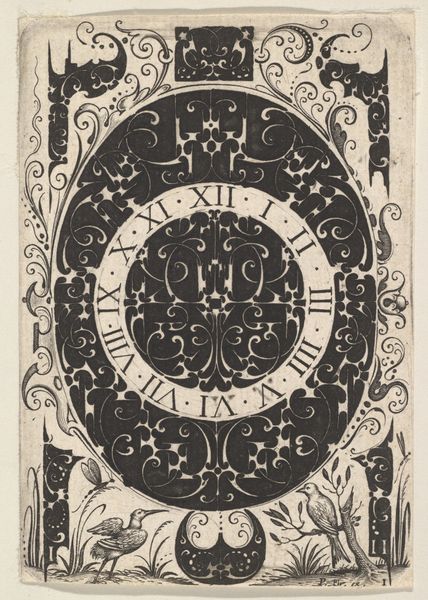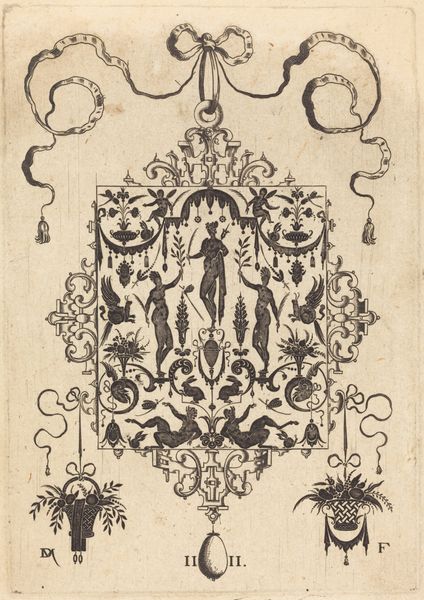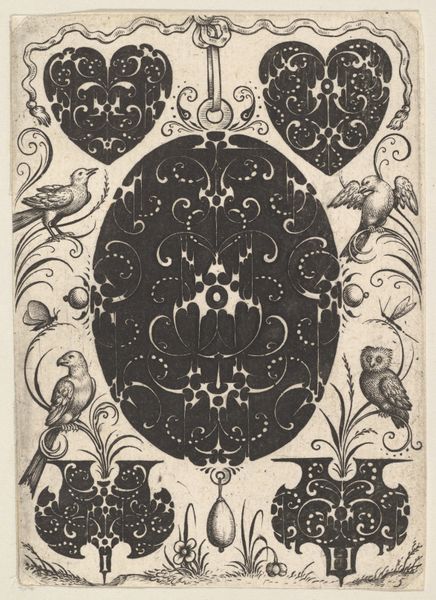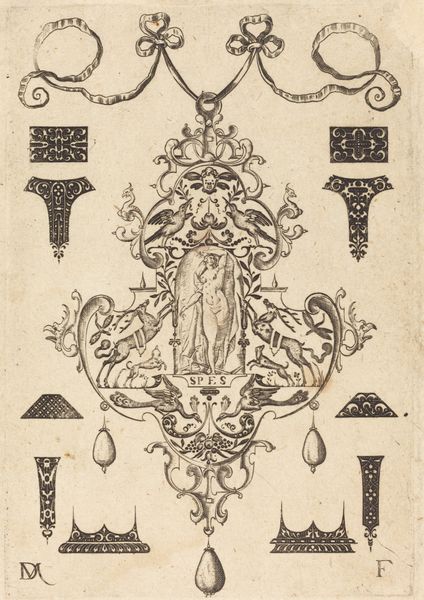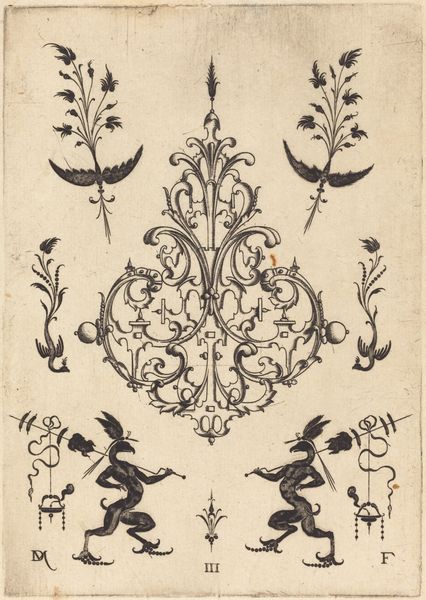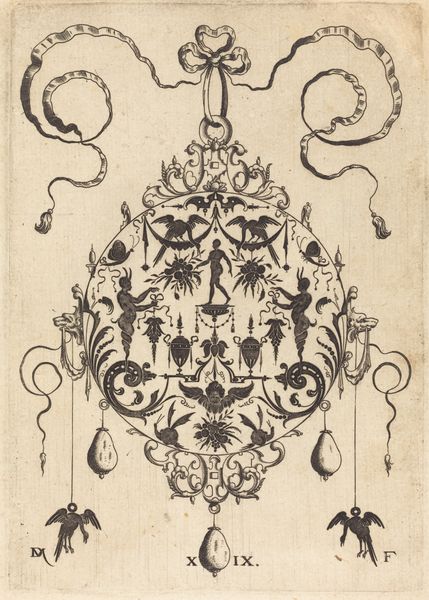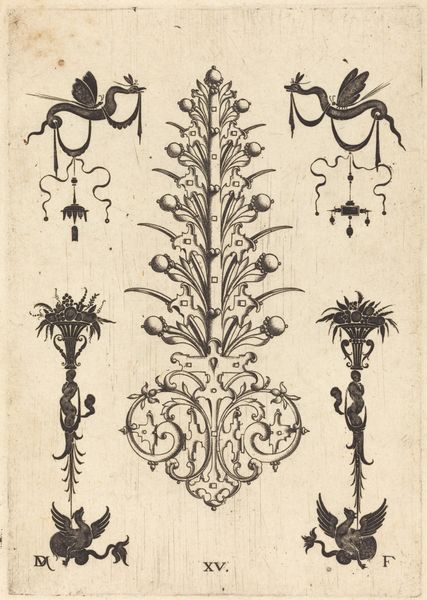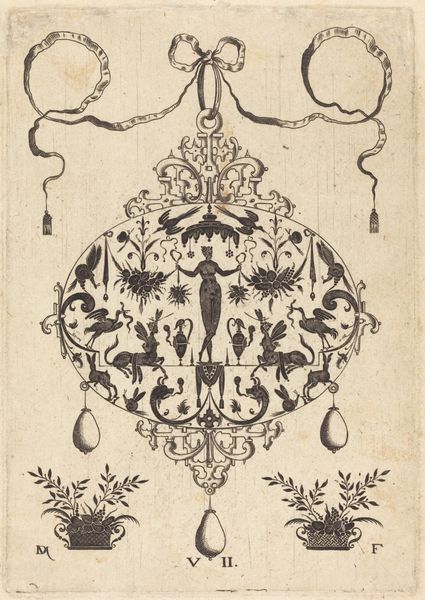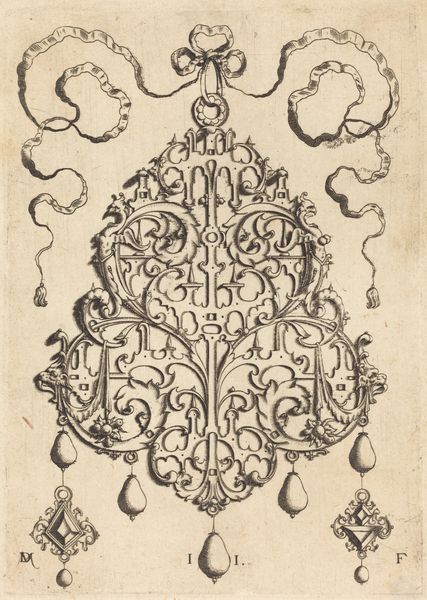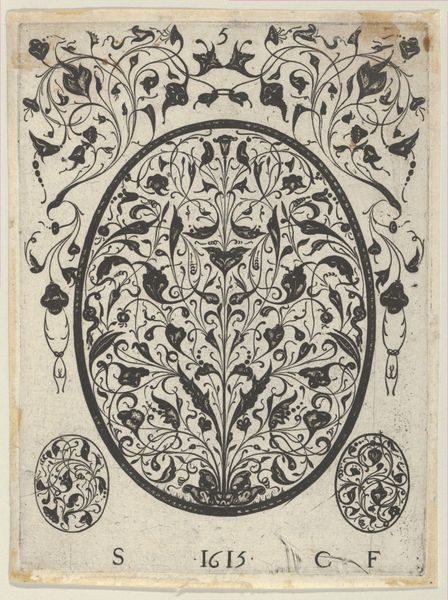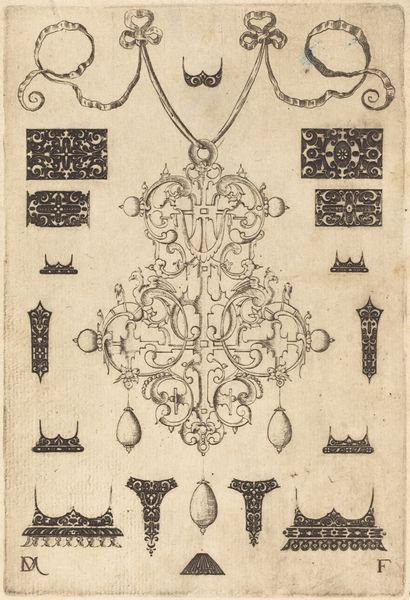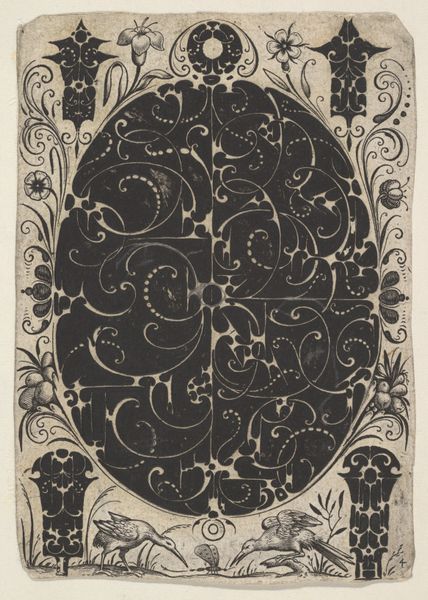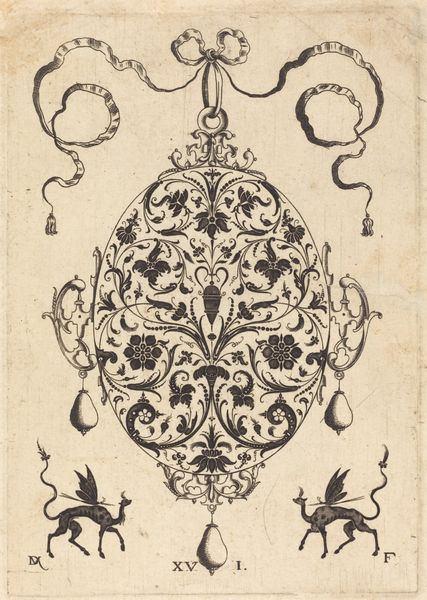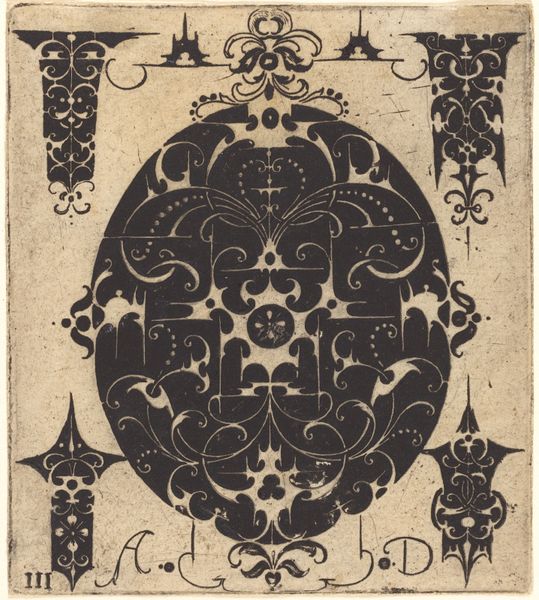
graphic-art, print, linocut, poster
#
graphic-art
#
art-nouveau
# print
#
linocut
#
linocut print
#
geometric
#
symbolism
#
decorative-art
#
poster
Dimensions: height 375 mm, width 241 mm
Copyright: Rijks Museum: Open Domain
Theo Nieuwenhuis made this calendar page for July 1896 using lithography, a printing technique that allows for detailed and expressive designs. Look closely and you will see that the calendar is framed by stylized lilies and swirling foliage, rendered in a muted palette of greens, creams, and blacks. The lithographic process is key here, lending itself to the fluid lines and organic forms typical of the Art Nouveau style. Each color would have required a separate stone or plate, demanding careful registration and skilled labor. But why create such an elaborate, hand-made object for something as ephemeral as a calendar page? In the late 19th century, there was a growing Arts and Crafts movement, fighting against mass production and emphasizing the value of craftsmanship. This calendar embodies that spirit, elevating a humble, functional object into a work of art. By understanding the materials, making, and context, we can appreciate how this calendar challenges traditional distinctions between fine art and craft.
Comments
No comments
Be the first to comment and join the conversation on the ultimate creative platform.
